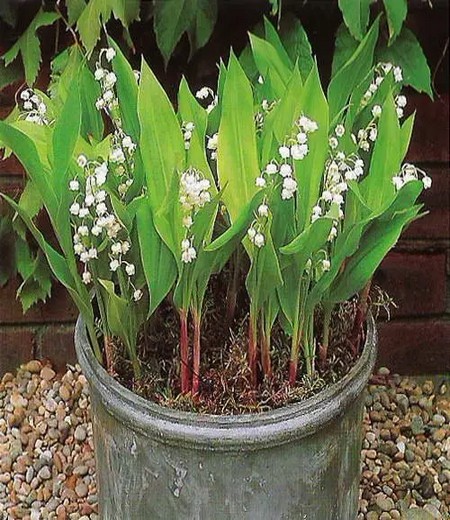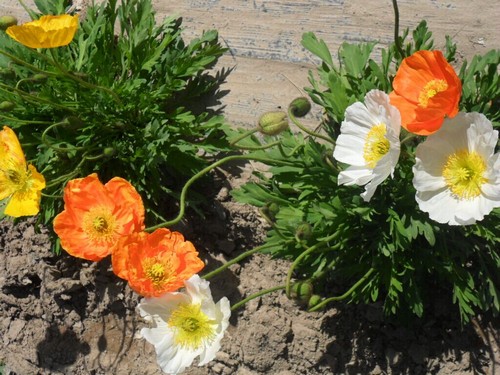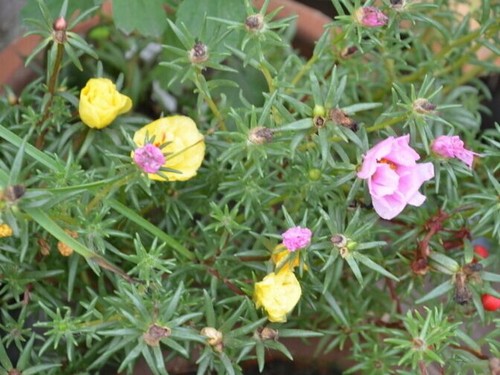How to grow lily orchids
The beauty of the valley of the valley is favored by the romantic French by nature. Since the beginning of the 20th century, the beloved lily of the valley has had its own program, and May 1 is the French "Lily of the valley festival" every year. The British are also big fans of the valley. "Lily in the valley" is the British common name for the valley of the valley. In addition, the valley of the valley in Britain also has "tears of ladies" and other elegant names. In China, calling "lily of the valley" as "gentleman's shadow grass" is reminiscent of Confucius' noble personality that "Zhilan was born in a deep valley and is not fragrant because there is no one; a gentleman practices morality and does not change his character for the sake of poverty."

The lily of the valley, also known as Junyingcao and valley lily, is the only species of the genus Lilium. The lily of the valley plant is short, the flower is clear and beautiful, all the flowers bloom downward as if they are small bells, which is of high ornamental value. Many people like lily of the valley, so do you know how to grow it? Next, the editor will introduce the planting method of the lily of the valley.
The lily of the valley prefers semi-shady, moist and cool environment, and avoid hot weather. As long as there is a suitable shady environment, the lily of the valley will propagate rapidly by spreading the rhizome. Lily of the valley likes shade and moist and fertile soil, and breeding of lily of the valley requires rich humus loam and sandy loam. The temperature of cultured Lilia should not be too high, otherwise it will not blossom, and the leaves of Lilia will be withered and yellow if the temperature is as high as 30 ℃. The lily of the valley goes dormant in summer.
Lily of the valley is generally used for ramet propagation, but also can be used for sowing propagation. There are many young buds of different sizes on the rhizome of the lily of the valley. After the shoot withered in autumn, the rhizome was dug up, and each terminal bud with a stem segment was cut off and planted, that is, it could grow into a new plant and generally blossom in the second year.
The sowing and propagation of the lily of the valley is to take out the seeds from the red-ripe fruits in autumn, sow the seeds directly on the open-field seedbed, and sprout in the following spring. Lily of the valley seedbed should be kept moist and properly shaded, and weeds should be pulled out in time. Lily of the valley seedlings grow slowly, usually 3-4 years before flowering.
The lily of the valley is cultivated in the open field, and it is better to plough deeply and fertile. Planting lily of the valley needs to cover more than 5 cm of soil, water thoroughly after planting, and the orchid should be planted every 3-4 years. During the growing period, the soil should be kept loose and moist, and fully fermented topdressing should be applied in early spring and late autumn respectively.
After the Lily of the valley germinated in spring, topdressing once every 15 days, watering should be paid attention to during drought, and fertilization should be stopped after the flower stem was drawn out. After the lily orchid withered, the pedicel should be cut off in time, and then topdressing 1-2 times. After the shoot withered in late autumn, it was covered with rotten leaves and cow dung to protect the rhizome and its dormant buds to survive the winter.
Potted lily can plant the rhizome treated with low temperature, and the temperature is maintained at about 18-20 ℃ during the whole cultivation period. Pay attention to fertilizer and water management and keep the soil moist. Lily can blossom in about a month. Lily of the valley should be cut off the stems and branches as soon as possible after flowering, so that nutrients are concentrated to supply the rhizome. Potted Lily Orchid chooses fat and large rhizome buds, with 4-5 buds per pot, which needs to be changed once a year.
The lily of the valley is strong in nature and extensive in management. if the rotten cake fertilizer is often applied after sprouting in spring, the lily will blossom and flourish. After the scape of the lily is extracted, it is necessary to stop fertilization, and resume fertilization for 1-2 times after flower fade, which can promote the germination of new tillers in the rhizome of Lilium.
The lily of the valley can not only be appreciated as an ornamental plant, but also can purify the air. It can inhibit the growth and reproduction of tuberculosis, pneumococci and staphylococci. Lily of the valley also has the role of dust removal, the valley of the valley can absorb floating particles and smoke in the air, reducing the impact of dust on household cleanliness. At the same time, the lily of the valley also has a certain medicinal value, such as warming yang and promoting diuresis, promoting blood circulation and dispelling wind. The lily of the valley mainly treats heart failure, edema, strain injury, avalanche and leakage, leucorrhea, fall injury.
Lily of the valley plant is short, elegant and beautiful, fragrant and pleasant, is an excellent potted ornamental plant, usually used in flower bed flower border, can also be used as ground cover plant. The following is a specific description of the planting method of the valley of the valley:
Lily of the valley planting method (necessary basic knowledge):
(1) soil requirements: Lily of the valley needs loose, fertile and well-drained soil.
(2) watering requirements: watering once or twice a day, replenishing water according to weather conditions and soil during the growth period.
(3) fertilization management: thin pancake fertilizer or compound liquid fertilizer should be applied every 10 to 15 days, and weeding should be done in time after each watering.
(4) Illumination requirements: place the upper basin in the leeward, properly water and place in the dark, and gradually move to the light after 10-15 days.
(5) temperature requirement: keep it at 12: 14 ℃, move to sunlight after 10: 15 days, and raise the room temperature to 20: 22 ℃.
(6) pruning: Lily of the valley should be cut off as soon as possible after flowering, so that nutrients can be concentrated on the rhizome.
(7) loosening the soil and changing the basin: the lily of the valley sprinkled the mulch after the new buds germinated in early spring, and loosened the soil, changing the basin once a year.
Time: 2019-05-25 Click:
- Prev

How to grow beauty Yu
When is the spring river flower moon, and how much do you know about the past? Xiaolou was windy from the east last night, and the country could not bear to look back on the bright moon. The carved rails and the marble steps must remain unchanged, but not her beauty. How much sorrow do I have? It is like a river of spring water flowing eastward. I never dared to think that the beauty of Yu who appeared in ancient poetry had been so close to me.
- Next

Planting technique of Scutellaria barbata
Scutellaria barbata is a kind of Labiatae plant, its dry aboveground part has the functions of heat-clearing and detoxification, promoting blood circulation and removing blood stasis, reducing swelling and pain, anti-cancer and so on. Jiang Yi's "picking up the remains of Medicine Mirror" records half a lotus to cure the fairy grass injured by snakes. In addition to the treatment of venomous snake bites, it is also used to treat tumors, which has a certain short-term effect.
Related
- Fuxing push coffee new agricultural production and marketing class: lack of small-scale processing plants
- Jujube rice field leisure farm deep ploughing Yilan for five years to create a space for organic food and play
- Nongyu Farm-A trial of organic papaya for brave women with advanced technology
- Four points for attention in the prevention and control of diseases and insect pests of edible fungi
- How to add nutrient solution to Edible Fungi
- Is there any good way to control edible fungus mites?
- Open Inoculation Technology of Edible Fungi
- Is there any clever way to use fertilizer for edible fungus in winter?
- What agents are used to kill the pathogens of edible fungi in the mushroom shed?
- Rapid drying of Edible Fungi

